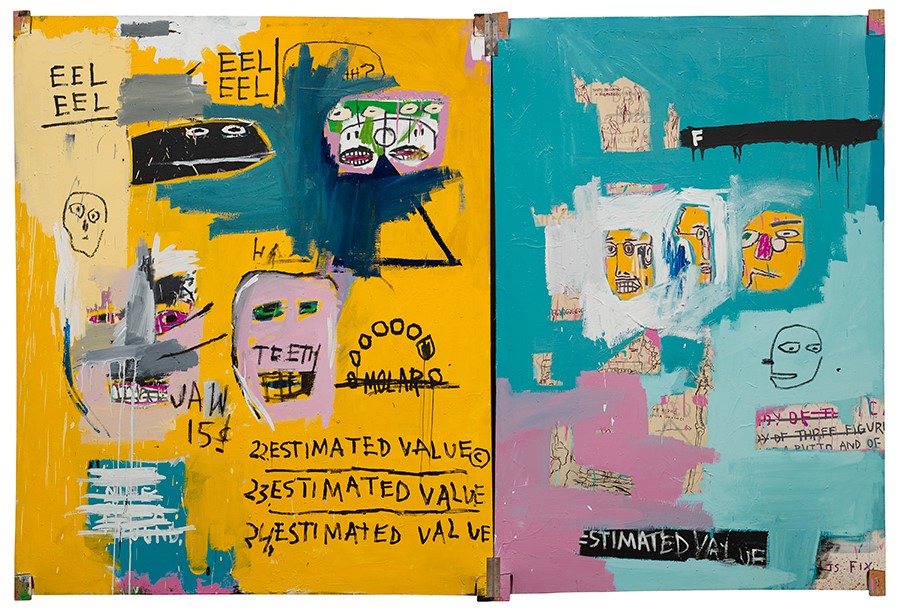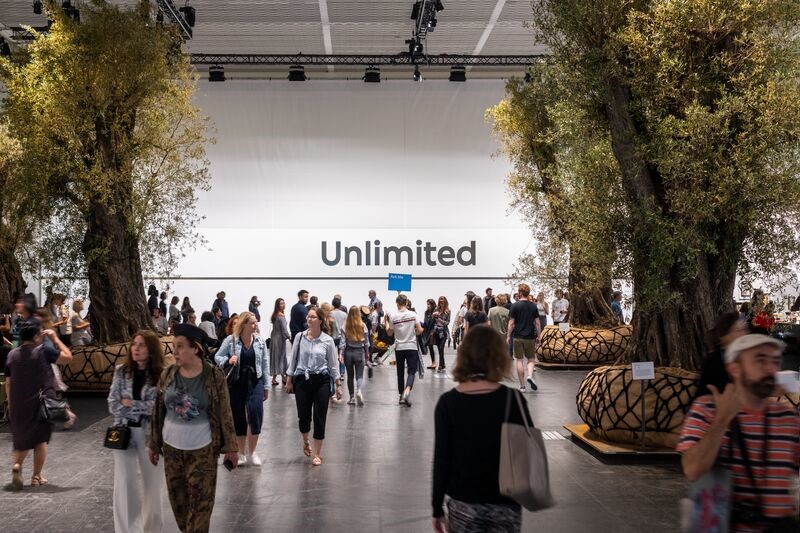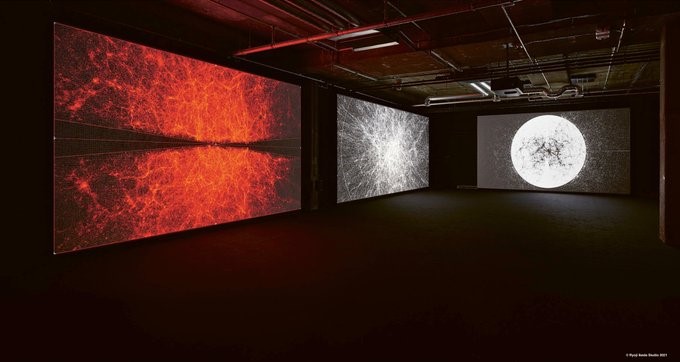Jean-Michel Basquiat continues to turn everything he touches into gold. A diptych of his, exhibited these days at the Art Basel fair in the city of Basel (Switzerland),is going to sell for 40 million dollars.
Although an accidental heroin overdose killed him in August 1988 at the age of 27, Jean-Michel Basquiat remains a legend and one of the most sought-after artists of the moment. This is demonstrated by the expectation that the work exhibited by a multi-millionaire Basquiat at the return of Art Basel..
Hardware Store is the title of the piece, brought to Europe by theVan de Weghe Gallery in New York . It is an avant-garde, naïve sublimation of what New York graffiti culture was all about at its peak. In the early eighties, when it first leapt from the suburban walls to the galleries thanks to urban art snipers like Basquiat himself. The work had hitherto belonged to a private collector whose identity is unknown. And it had been exhibited twice, at the Whitney Museum in New York between 1992 and 1993 and at the Louis Vuitton Foundation in Paris between 2018 and 2019.

Hardware Store, diptych by Jean-Michel Basquiat (1983).
According to gallerist Christophe Van de Weghe, the man who has brought this genuine and almost unpublished Basquiat back to the market.
“The diptych has an extraordinary visual force, it is very representative of the rawness and intensity of its author: after several unsuccessful attempts, I have convinced its owner, who is a good friend of mine, that the time has come to sell it”.
In Hardware Store (a title that could be translated into Spanish as Ferretería) the constants of the most groundbreaking and streetwise Basquiat are represented. The one who burst out of Brooklyn while still a teenager to illuminate the walls of Lower Manhattan and enter the orbit of Andy Warhol.
For Joyce Li, editor of HypeArt magazine,
“40 million is a real fortune, no doubt, but this Basquiat is likely to be worth every penny that is asked for it. After all, how can you put a price on such a representative work by what is now the most sought-after contemporary artist in the world after Pablo Picasso?
About two metres high by three metres wide, the diptych combines two canvases, one yellow and the other blue. On them, the artist of Haitian origin displayed his usual grotesque and cadaverous faces alongside a premonitory text speculating on the “estimated value” of the work. The figures in the margin (22, 23 and 24 million dollars?) suggest that the artist was aiming very high, but in any case he fell short.
Committed art, but without commitments
The reappeared Basquiat is one of the flagships of a great international fair that is meeting its public again this year, after a 2020 edition that was only virtual due to the imperative of the pandemic.
Art Basel, under its current director, the French-American Mac Spiegler, reached its peak in 2019, bringing together more than 93,000 attendees and 290 galleries from 35 different countries, which together exhibited works by nearly 4,000 artists.

The most groundbreaking fair opens its doors today.
The pair of Art Basel satellite events, held in Miami Beach and Hong Kong, also reached their zenith at the time, before the health crisis made impossible the qualitative leap in attendance that was planned for September 2020, the year of the event’s 50th anniversary.
The current edition will once again be held at the Basel fairgrounds, following a mixed model that combines virtual exhibitions and in-person shows with restricted seating capacity. On Monday 20 September it opened its doors to professionals, specialised press and collectors and the public will be able to access it between Friday 24 and Sunday 26, the closing date.
Art Basel celebrated its first edition in 1970 and almost since its origins has been synonymous with radical, disruptive and uncomplicated contemporary art. The Swiss fair was a pioneer in its day in its commitment to digital and performative art, gave visibility to the first batch of artists of the Arab Spring, dedicated monographic shows to ecological activism and gender perspectives. Moreover, it has been capable, in short, of reconciling its character as a commercial event with that of a platform that promotes and catalyses new trends.

An image of the venue where Art Basel 2021 is held.
This year, the attention of experts is focusing above all on Unlimited, a comprehensive exhibition of very large-scale multi-format projects curated for the first time by Giovanni Carmine, director of the St. Gallen Museum of Art.
Carmine has brought together a total of 62 installations by both established and emerging artists, starting with Japan’s Ryoji Ikeda. With his visual and sound labyrinths in which the digital and the organic coexist in fertile chaos, or the Beirut poet and visual artist Etel Adnan, author of vast minimalist tapestries in which colour recovers all its integrity and purity.

Data-verse (2018), by Ryoji Ikeda.
The financial services firm UBS, one of Art Basel’s main partners, contributes this time with Reimagining: A Better World. A hybrid show (there are both physical works on display at the venue and a much larger virtual version) in which artists such as the Irish conceptual photographer Richard Moss, the American Catherine Opie and the highly sought-after Argentinean architect and performer Tomás Saraceno reflect on contemporary phenomena. They pose challenges of unforeseeable consequences, from climate change to mass immigration and the energy crisis.

A display of urban art on the streets of Basel.
As for Parcours, the open-access participatory art programme with which Art Basel has opened up since the beginning of this century to the city of Basel as a whole, this year’s highlight will be an intervention in the civic square of the fairgrounds by the British artist Monster Chetwynd. The artist, famous for his anarchic and festive acts of cultural agitation, almost always performed by actors and dancers in outlandish papier-mâché costumes.

Point of no Return (2019), by Ryoji Ikeda.
Indoors, but also within the framework of Parcours and on different stages distributed throughout the city, the striking sketches on racism and gender violence by the North American Kara Walker or the self-portraits with a vocation for visual enigma by the photographer and filmmaker Cindy Sherman can be seen. Artists of all kinds who didn’t want to miss, in short, the reunion with their public of the most groundbreaking art fair on the planet.
When: 24-26 September, open to the public.
Where: Basel Exhibition Centre (Messe Basel), Switzerland.




